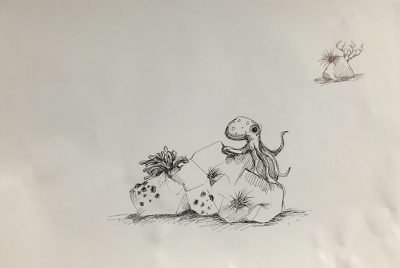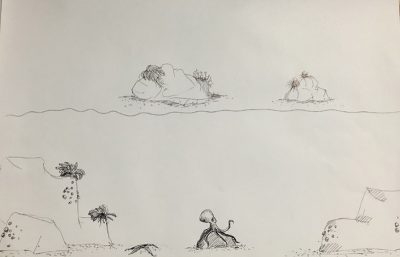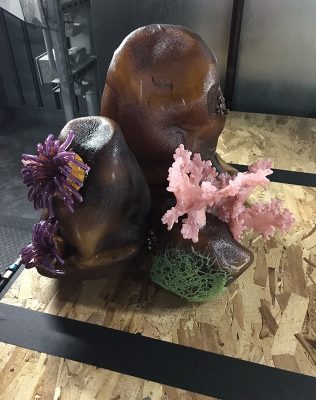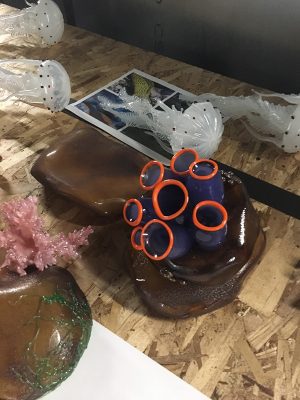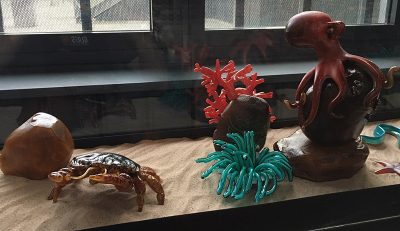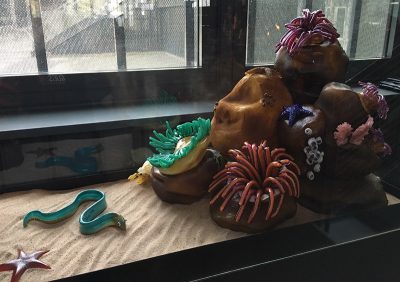 Teamwork and creativity are parts of the daily norm here at The Corning Museum of Glass. As a member of the Hot Glass Demonstration team, I’m fortunate enough to work alongside a group of highly-gifted glassmakers and with a material we’re all passionate about. Our program offers us wonderful opportunities to collaborate and bring to life some really fun projects. Vitreous Aquarium is just one example of artists and makers inspired by other artists.
Teamwork and creativity are parts of the daily norm here at The Corning Museum of Glass. As a member of the Hot Glass Demonstration team, I’m fortunate enough to work alongside a group of highly-gifted glassmakers and with a material we’re all passionate about. Our program offers us wonderful opportunities to collaborate and bring to life some really fun projects. Vitreous Aquarium is just one example of artists and makers inspired by other artists.
The work of Leopold and Rudolf Blaschka is, to say the very least, absolutely amazing in every way. As a glassmaker myself, I look upon the life-like models of marine invertebrates created by the father and son duo, and instantly respect the level of craftsmanship and skill it took to create them in such vivid detail. I also feel something else—a desire to create something beautiful.
Months ago, the Hot Glass Team began brainstorming ideas for a display we could create to pay homage to the exhibition Fragile Legacy: The Marine Invertebrate Glass Models of Leopold and Rudolf Blaschka. It didn’t take long for a coral reef theme to solidify.
A display case was selected to stand in for an aquarium, and ink drawings were drafted to lay out a basic format to fill it.
- Pen and ink drawings for Vitreous Aquarium
- Pen and ink drawings for Vitreous Aquarium
Prototyping began with many different forms, process experiments, and color tests.
It became very clear that rock formations would be a great way to give the display a more dynamic appearance and so that not all the objects would be at ground level in the case. We sculpted glass rocks, adding colored glass powders for a more organic look. This process quickly evolved to adding colorful details like coral, barnacles, sea grass, and anemones, while keeping in mind how they would all fit together in the end.
A sheet of plywood with a measured tape border provided a good workspace to begin grouping the objects together and create impression of how the final space would look.
- Fitting the pieces together
- Glass sea creatures for Vitreous Aquarium
Over two months, our team created many types of sea creatures, including life-like crabs, octopuses suctioned to rocks, and a variety of eels, sea slugs, colorful sea stars, vibrant corals, and translucent sea jellies to fill the aquarium.
When the time came to piece them all together for the final display, each rock formation was carefully fitted together using a touch of silicone here and there just for caution. Custom stands of borosilicate rods were flameworked for mounting jellies to give them a floating effect and to help create the overall underwater scene. The final touch was covering the entire floor of the display with play sand to really set the stage for a coral reef made of glass.
Drawing inspiration from other artists and makers is part of what keeps creativity flowing, and with many of the Blaschka models now on display in our museum, our team is able to see them every day. Throughout the summer at CMoG, our Hot Glass Team will be creating more Inspired by Blaschka pieces from glass every day. It is a wonderful way to share the knowledge of glassmaking techniques, artistry, and history in a fun and engaging manner.
Stop by the Amphitheater Hot Shop to see live glassmaking demonstrations, and to enjoy our glass coral reef, Vitreous Aquarium, on display.

